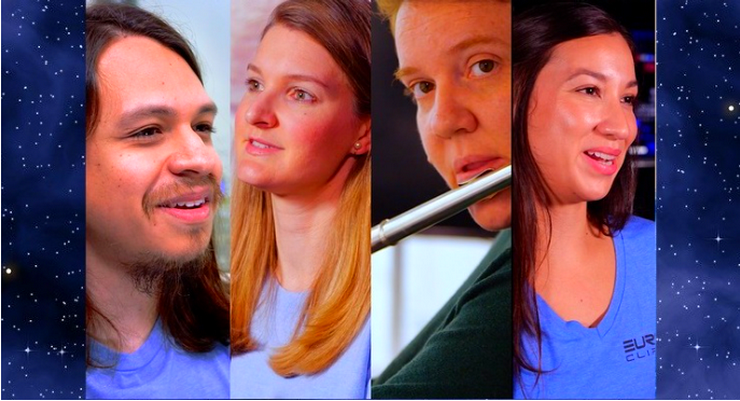
Learn about some of the engineering work being done by five members of NASA’s Europa Clipper mission, which aims to launch Thursday, Oct. 10. [Credit: NASA]
NASA has released a new video series spotlighting engineers working on the Europa Clipper mission, with its launch period opening Thursday, Oct. 10. The series, titled “Behind the Spacecraft,” features five team members, four of whom work at NASA’s Jet Propulsion Laboratory in Pasadena.
The first video showcases Sarah Elizabeth McCandless, a navigation engineer at the Pasadena lab, who planned the spacecraft’s trajectory. Three additional videos will focus on other Jet Propulsion Laboratory engineers: Jenny Kampmeier, who interfaces between scientists and engineers; Andres Rivera, a first-generation American working on the spacecraft’s journey to Jupiter; and Valeria Salazar, who spent her childhood in Mexico and tested the spacecraft for launch readiness.
The fifth video features Dipak Srinivasan, lead communications systems engineer at Johns Hopkins Applied Physics Laboratory, who ensures communication with the spacecraft.
Europa Clipper, NASA’s largest planetary mission spacecraft, will travel 1.8 billion miles to study Jupiter’s moon Europa. This marks NASA’s first mission dedicated to exploring an ocean world beyond Earth. Scientists believe Europa contains a global saltwater ocean beneath its icy surface, potentially harboring conditions for life.
The spacecraft, largely developed at the Pasadena facility, will orbit Jupiter and conduct multiple flybys of Europa. It aims to collect scientific data using nine instruments and a gravity experiment, navigating through Jupiter’s intense radiation environment, presenting unique engineering challenges.
NASA will host livestreams answering questions about the mission on Oct. 1 in English and Oct. 3 in Spanish. These will be available on NASA+, YouTube, Facebook, and X, with the Spanish broadcast on NASA en Español YouTube channel.
The Europa Clipper mission is a collaborative effort managed by California Institute of Technology’s Jet Propulsion Laboratory in Pasadena, with partnerships including Johns Hopkins Applied Physics Laboratory and NASA’s Goddard Space Flight Center. The Planetary Missions Program Office at NASA’s Marshall Space Flight Center executes program management, while NASA’s Launch Services Program at Kennedy manages the launch service.


















